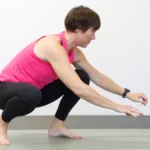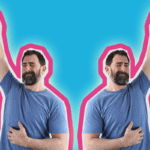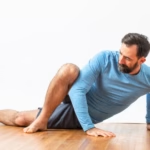Somewhere along the way, a lot of us bought into the lie that “If you want to stay strong, you’ve got to live sore, stiff, and maybe a little bit broken.”
Yet, it’s absolutely wrong, and there’s no need for it be that way at all.
You can lift heavy, move better, and feel good doing it. You just need a smarter plan — not more punishment. And that’s where we can help.
But first, it’d be great to see how where you stand compared to others with this question:
Training For Identity Vs. Training for Capability
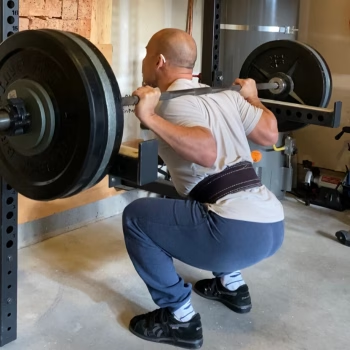
Nothing wrong with a heavy squat — but how’s your body feeling after it’s done?
It seems that some people turn their training into a badge, “I’m a kettlebell guy.” “I only do calisthenics.” “Heavy weights is it for me!”
That identity can be comforting — until it traps you. We see it all the time; people who can deadlift a small car but can’t cross their legs to tie their shoes, or folks who can do cool tricks on rings but have a trick shoulder that always hurts.
A lot of our clients have come from both camps. They’ve lifted heavy for decades. They’ve nailed handstands and flips. But after years in the game, they came face to face with what seemed to be the only choice: Give up their identity of being strong—or keep feeling broken.
But what they were really looking for was the ability to feel good, move well, and not feel wrecked in daily life. GMB gave them permission to blend, adapt, and stay strong.
As one client said after he went through our method:
“My goal when I started was literally, ‘I want to do more than just lift heavy shit!’ GMB has made me stronger, given more stability for bigger lifts, and given me more strength through a better range of motion. That last part is huge! More strength through a better range doesn’t just make weights easier, it makes life easier”
The Compounded Cost Of Doing Things The Old Way
A lot of people come to GMB after years—sometimes decades—of consistent training. They built routines: lifting, cardio, maybe yoga. It all worked, until it didn’t.
Over time, those small tweaks and occasional tightness become chronic tension. Those “just stretch it” spots become ongoing issues. Eventually it’s not just one or two tweaks—it’s a cascade. Knees. Elbows. Hips. Back. Lots of regimens can keep you fit, but not all of them make you resilient.
Piling on more work isn’t the same as being balanced. And brute effort doesn’t fix blind spots.
One client described it perfectly:
I was finally making progress…but then everything caught up with me. It wasn’t just one or two issues, it was a multi-system failure: plantar fasciitis, tennis elbow, nagging shoulder, knee issues. Anyway I could tell very early on that GMB was different. I’m only a couple months in, but I FEEL stronger, I get out on the basketball court and I’m able to increase my intensity… and intensity matters! I can tell that there are parts of my body that are getting use that really haven’t been used enough before. .
Let’s put off the thought that we don’t want you to work on your strength, that’s not it at all. Especially if you simply just love picking up heavy things! We just want to show you that there’s a reframe for being strong that also involves being able to move well.
Here’s Ryan demonstrating how you can incorporate a great movement into your training that will complement your lifting and keep your hips happy.
This Is What “Strong Enough” Actually Feels Like
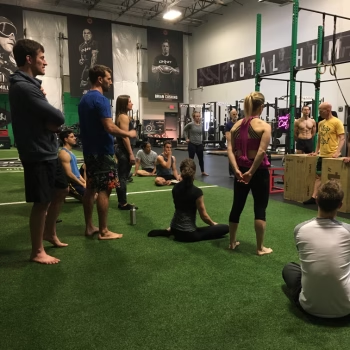 The majority of the people we work with aren’t chasing world records or Instagram views. They’re working for the ability to shovel snow without tweaking a shoulder. To carry groceries. Lift their kids. Roll hard in jiu-jitsu without limping around the next day.
The majority of the people we work with aren’t chasing world records or Instagram views. They’re working for the ability to shovel snow without tweaking a shoulder. To carry groceries. Lift their kids. Roll hard in jiu-jitsu without limping around the next day.
They’re strong for sure, but more importantly—they’re capable.
Training with GMB gave them something that strength-for-strength’s sake or endless high-intensity circuits didn’t; confidence that their strength will show up when it matters. One Integral Strength client told us:
“I love that I am challenged by it, but I’m never exhausted or wrecked. And because of that I’m making real progress. Also, all of Integral Strength (and Elements) translates so effortlessly into everyday life. I live in NYC which involves a lot of moving, schlepping, and twisting around tiny spaces in a tiny apartment. I can handle this because of GMB. I didn’t have that level of confidence before starting GMB, even though I had done a number of other fitness programs. “
Train Like a Grown-Up: It’s Not Either-Or, It’s Smarter
Here’s the truth: appropriate barbell training can be great. Tailored bodyweight skill training can help you move better. You don’t need to choose. You just need to be strategic!
View this post on Instagram
And this means being smart about *how* you combine them: here’s four key principles that will help you.
1. Skill Before Strength
Do the work that requires more coordination, focus, and energy when you’re fresh. You shouldn’t be tacking on handbalancing exercises after a near-limit deadlift session. Save the heavy grinding for later. Skill-based work—like locomotion drills, handstands, or single-leg balances—makes a perfect warm-up because it sharpens your body awareness and sets the tone for the session.
Bonus: it lets you gauge how your body’s performing that day. If your balance is shaky, you might want to drop your lifting percentages. That’s smart autoregulation—not laziness.
2. Volume Math
If you’re adding in Elements or other work, you don’t need to stack more and more volume. Pull back your lifting sets—not because you’re fragile, but because you’re smart. Everything adds up. You can still push intensity on your lifts—just trim the set count.
You may even find your true ‘minimum effective dose’ for strength gains — the point where you’re getting results and can spend more time on skill work and recovery. We all know more isn’t always better, but having a clear process helps you tell the difference between when to push for a little bit more gain and when to say “enough is enough”.
3. Cycle Your Focus
This is more than a training principle—it’s a life principle. Your energy, time, and recovery ebb and flow. And what’s the best use of your energy? It’s when you learn to ride the waves instead of fighting against the current.
Some phases, skill work takes center stage. Other times, go for pure strength and give it all you got. And some weeks, you should just shift into cruise control and simply enjoy your training.
Let each focus feed and recharge the other.
4. Keep Recovery a Priority
You’re a grown-ass adult. Sleep, stress, work, family—these things matter. Ignoring them doesn’t make them disappear. In fact, ignoring them is exactly how you end up frustrated, stalled, and wondering why everything feels harder than it should.
Build your training so that it respects your life, not just your ambition. We can’t repeat this enough; it’s not laziness or “not wanting it badly enough”. In the long run, knowing how to train smart keeps you in the game longer and gets you stronger and more capable than killing yourself for a few months and then quitting altogether. Don’t do that!
Strength That Carries Over
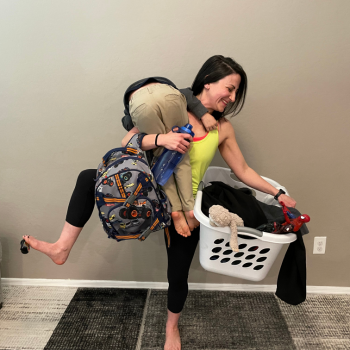 What we teach at GMB isn’t super flashy. A lot of it is fundamental work repeated in a lot of different ways. It’s comprehensive, adaptable, and real.
What we teach at GMB isn’t super flashy. A lot of it is fundamental work repeated in a lot of different ways. It’s comprehensive, adaptable, and real.
One of our clients wrote a review with the subject line “expletive deleted”
“I am turning 40 next year, and I FEEL F****** AMAZING! GMB’s programs have completely shifted my perspective on what I am capable of doing as a human. I like doing extreme sports and I’ve damaged my body. There’s hardware holding stuff together. I DO NOT STRUGGLE with any of my injuries because of the time I’ve given to Elements. I’ve started to push it harder beacuse my strength and balance have improved so much.”
Our clients are people with decades of lifting, martial arts, and active living behind them. People with rebuilt joints and full calendars. And they’re not just getting through their workouts—they’re getting more out of life because of them.
Train for a Life That Says Yes
There’s nothing wrong with training for personal bests. PRs and concrete numbers can be motivating. It’s when they become the one thing that you start heading down the wrong path.
Being so beat up just to say you got 20 more pounds on the bar? That’s not strength—it’s limitation. It makes you say “no” way too often.
Training should be a way you say *yes* more often. Yes to a pickup game. Yes to chasing your kids. Yes to beach volleyball, or a hike, or just waking up feeling good in your body.
Our clients want to stay active—not just for their health, but for their joy.
“My motivation is make and keep my joints strong enough to do the kind of training I want to do for decades to come without wrecking my body.”
GMB isn’t a replacement for lifting or cardio or sport. It’s the glue that holds all of it together. It’s what lets your strength and movement support your whole life, instead of getting in its way.
Keep Saying Yes to What You Love
Train so you can play longer, recover faster, and move better—on your own terms. You’re not done yet. Not even close.
With Elements, you’ll learn a comprehensive program for your strength, mobility, and skill that fits seamlessly into your other training.



